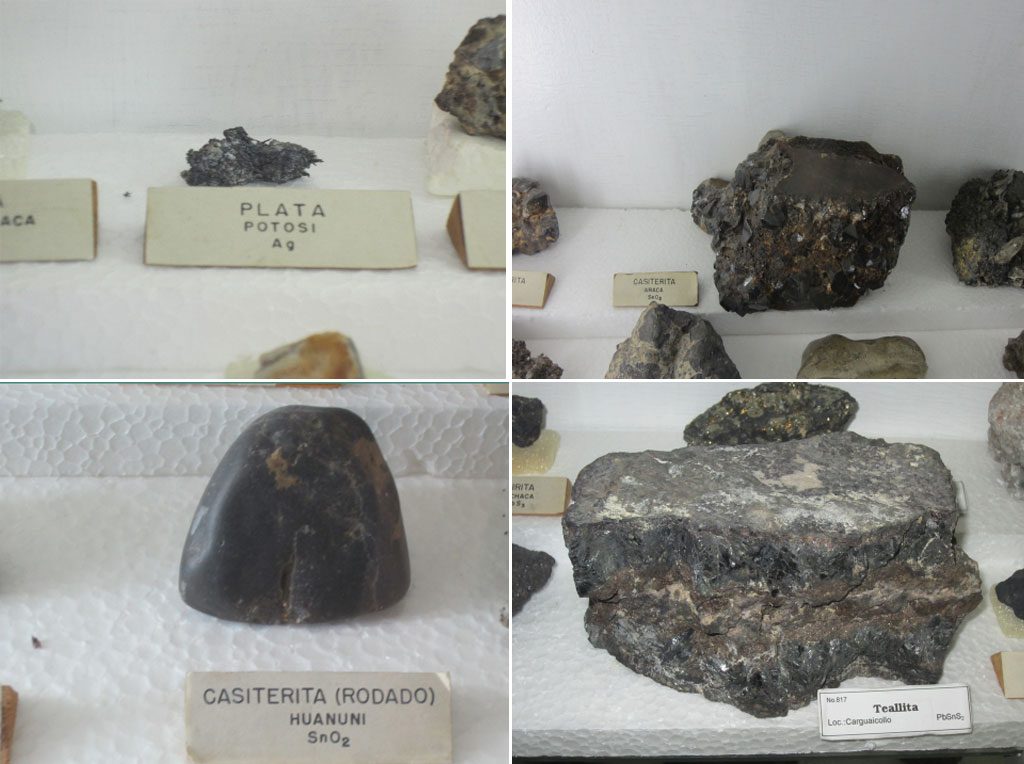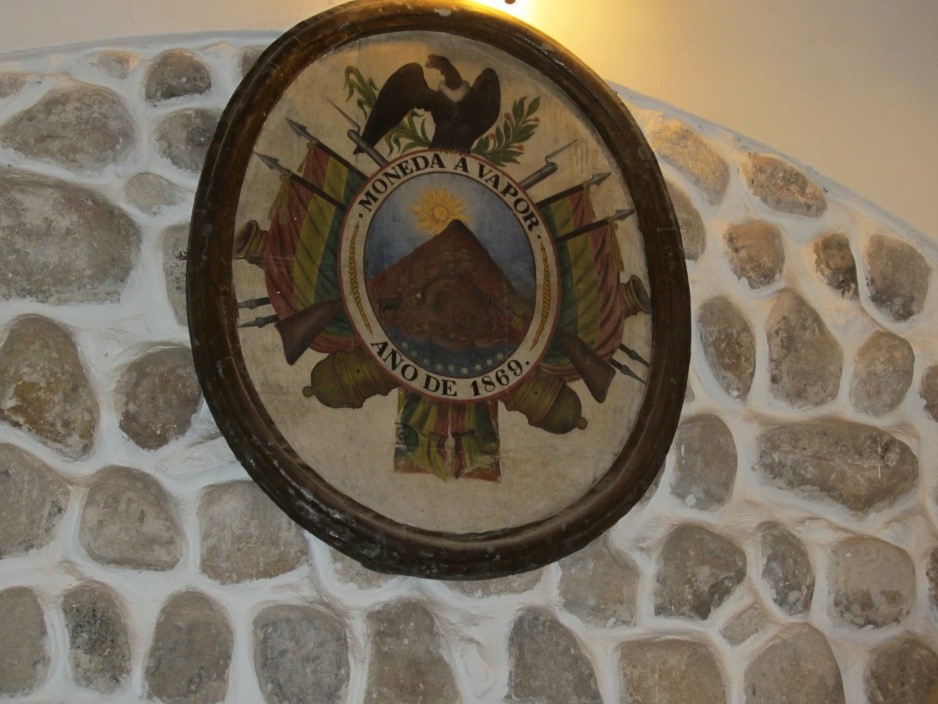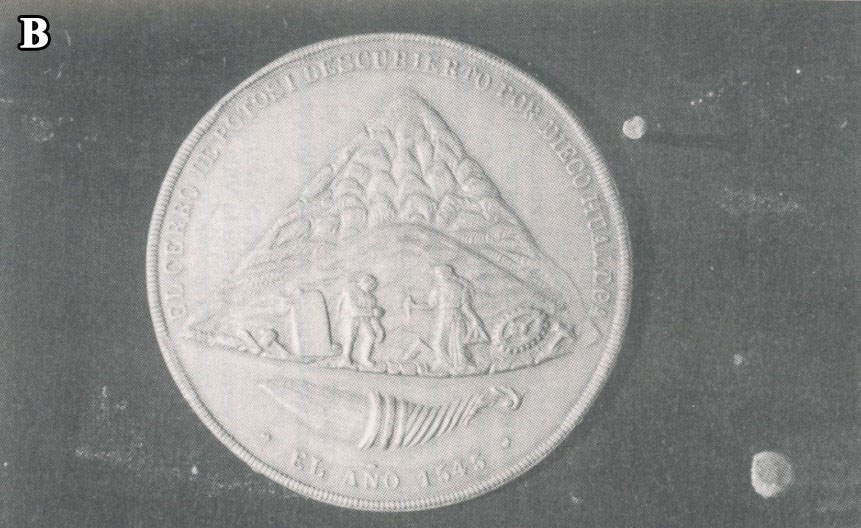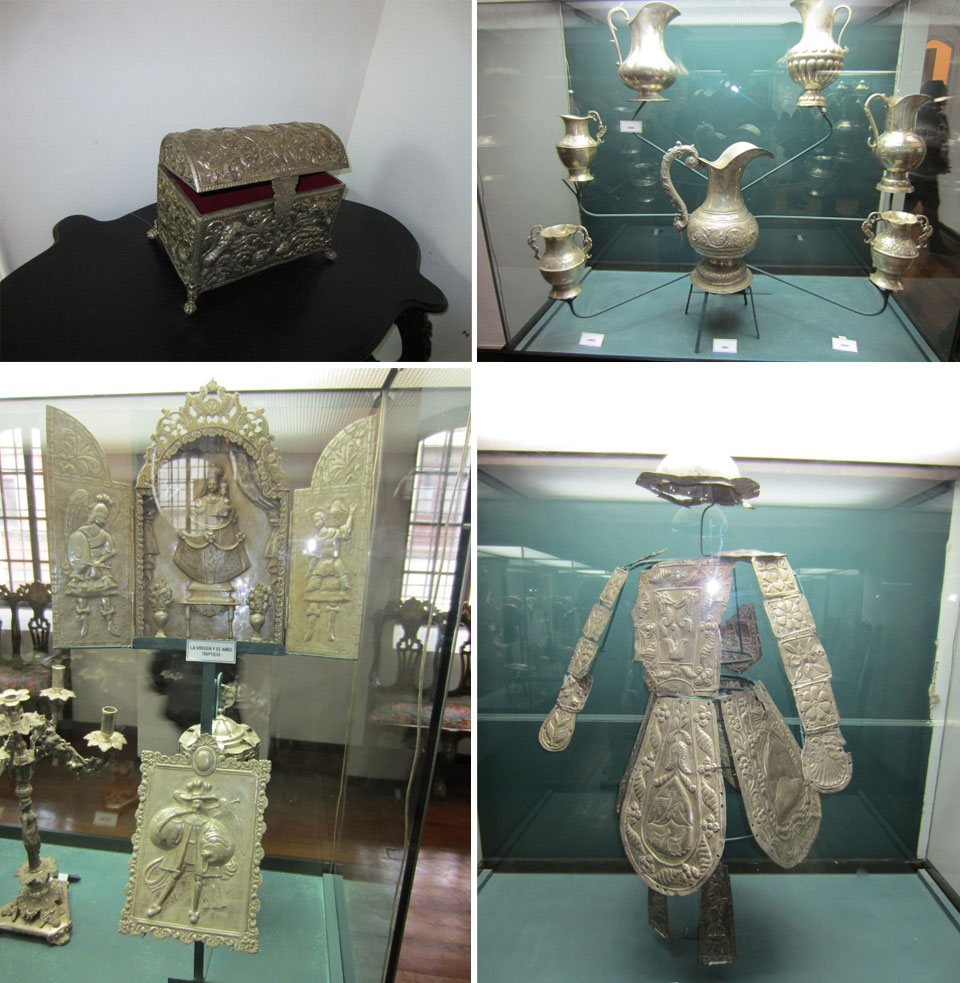04 – Casa de la Moneda in Potosi
Ano 04 (2017) - Número 01 Artigos
![]() 10.31419/ISSN.2594-942X.v42017i1a4HP
10.31419/ISSN.2594-942X.v42017i1a4HP
Herbert Poellmann, Prof. Dr.Dr. Institute of Geosciences and Geography, Martin Luther University Halle-Wittenberg, Halle (Saale), Germany.
The “Casa de la Moneda” was started in 1542 to coin the rich occurences of silver from Cerro Rico mountain. Today it is home of a museum which documents the old machinery, different silver commodities and luxury goods (Figure1). In figure 2 coining dies and a typical silver coin with the Cerro Rico as a head motif are shown.
Besides the typical commodities many articles were made by the enormous silver masses which were available at that time and were shipped mainly to Spain. Figure 3 shows some examples demonstrated at the Casa de la Moneda.
Part of the museum also shows different typical minerals from Bolivia as shown in figure 4. The many different commodities made out of silver show, that at this time beginning in 1545 it must have been one of the richest parts of the world. Even chamber pots were made out of silver (Figure 3). It must be mentioned, that a visit to this place is a must when visiting Potosi. This museum gives a broad overview on coining techniques, different coins and medals and other daily articles made out of silver. It can also be seen how the technique for coining was improved during the centuries and the different techniques used at the different times. The broad variety of minerals is shown in a separate part of this museum (Figure 4).

Figure 4. Typical minerals from Potosi area: Silver, Cassiterite, Cassiterite (Kidney tin), Teallite.




